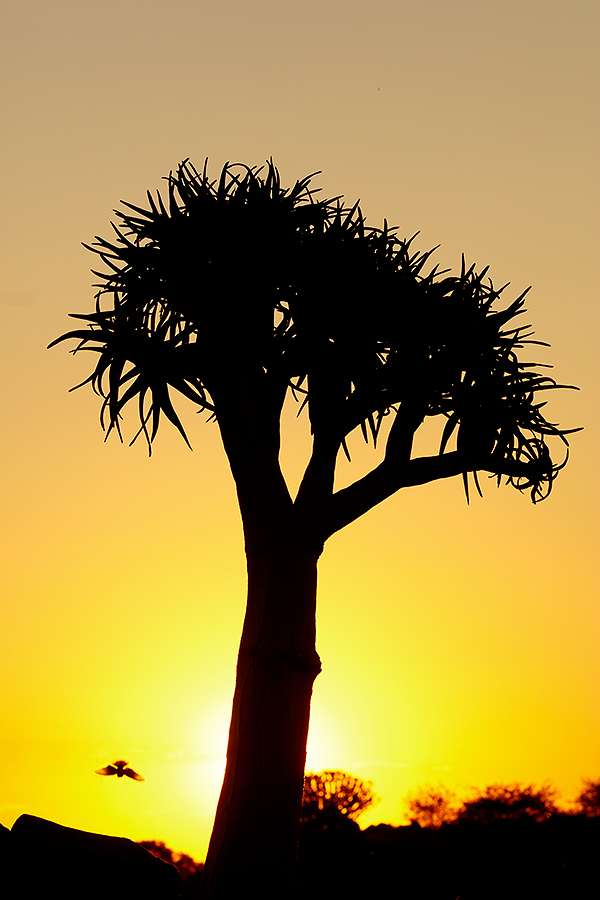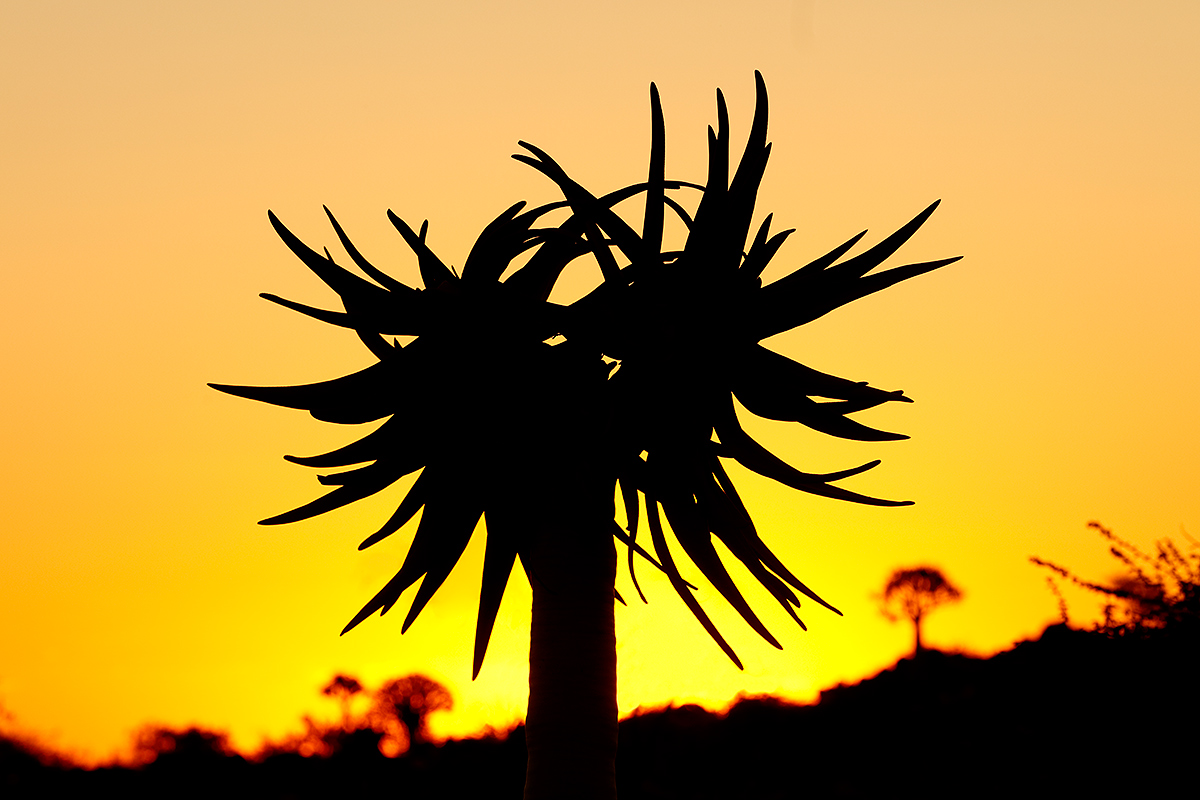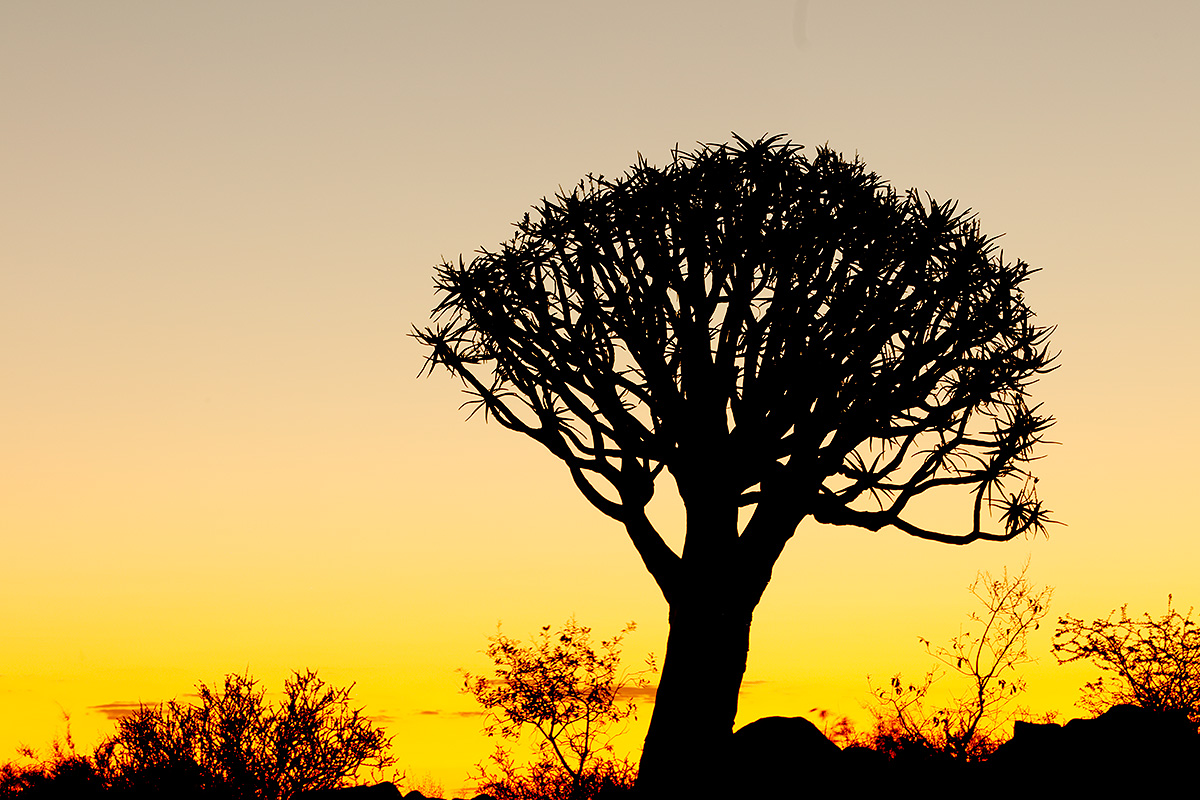What’s Up?
I should be almost home if everything has gone according to plan. I hope to be visiting with y’all on a regular, more personal basis again here soon. I should be back in the office late on the afternoon of Friday, April 29.
The Streak
Today’s blog post marks 175 days in a row with a new educational blog post… As always-–and folks have been doing a really great job recently–-please remember to use our B&H links for your major gear purchases. For best results use one of our many product-specific links; after clicking on one of those you can continue shopping with all subsequent purchases invisibly tracked to BAA. Your doing so is always greatly appreciated. Please remember: web orders only. Please remember that if you are shopping for items that we carry in the BAA Online Store (as noted in red at the close of this post below) we would appreciate your business.
|
This image was created on the 2016 Namibia IPT at the Quiver Tree Forest, Keetmanshoop, Namibia with the Induro GIT 304L/Mongoose M3.6-mounted Canon EF 70-200mm f/2.8L IS II USM lens, the Canon Extender EF 1.4X III (at 185mm) and the mega mega-pixel Canon EOS 5DS R. ISO 400. Evaluative metering -1/3 stop: 1/500 sec. at f/11 Av Mode. Color temperature: 8,400K. Center AF point (Manual selection) /AI Servo Rear button AF on the upper part of the trunk and re-compose slightly. Click here to see the latest version of the Rear Focus Tutorial. Click on the image to see a larger version. Image #1: Quiver tree with passerine |
The Quiver Tree Forest
After the ghost town holiday, Denise Ippolito and I met the group at a farm outside of Keetmanshoop with lovely guest lodgings. We were greeted by the hosts pet Warthog. After unpacking, we enjoyed a superb early dinner of Oryx stew in burgundy wine sauce. Then Wim gave a lesson on light painting Milky Way photography. We learned to frame the image, to focus using Live View, to set the correct exposure, and how to set up our Pocket Wizards and cable. We headed out, most with intermediate telephoto lenses, into the golden light of a clear African afternoon. We made some nice images of Quiver Trees right from the parking lot. Most of the group followed Wim and sidekick Ben Crane into the protected forest area. Seeing the potential for some sunset silhouettes of tress on the ridge to the west that was actually outside of the formal Quiver Tree forest. I invited several clients to follow me but all chose to head into the preserve with Denise, Ben, and Wim. I spent about 40 minutes galavanting across the hillside in search of a great tree to silhouette. At first, there was enough light to hand hold but after a while I put my 70-200 onto the tripod. After I found it in near total darkness.
Then I caught up with the group and enjoyed a challenging five hour light painting/Milky Way photo session. I will share my best image from that session with you here soon. We did not get back to our rooms until almost 2am. After a very few hours of sleep we woke early and hit the road, headed to the the luxurious Sossusvlei Dune Lodge inside Namib Naukluft National Park.
|
This image was also created on the 2016 Namibia IPT at the Quiver Tree Forest, Keetmanshoop, with the Induro GIT 304L/Mongoose M3.6-mounted Canon EF 70-200mm f/2.8L IS II USM lens, the Canon Extender EF 1.4X III (at 210mm) and the mega mega-pixel Canon EOS 5DS R. ISO 400. Evaluative metering +1/3 stop: 1/400 sec. at f/11 Av Mode. Color temperature: 8,400K.. Center AF point (Manual selection) /AI Servo Rear button AF on the upper right part of the tree’s crown was active at the moment of exposure. Click here to see the latest version of the Rear Focus Tutorial. Click on the image to see a larger version. Image #2: Crown of young Quiver tree |
The Youngster
I found the crown of this young Quiver Tree to be quite graphic. It was a challenge getting into position on the rock hillside. I sure was glad that I did not wear my sandals…
|
This image too was created on the 2016 Namibia IPT at the Quiver Tree Forest, Keetmanshoop, with the Induro GIT 304L/Mongoose M3.6-mounted Canon EF 70-200mm f/2.8L IS II USM lens, the Canon Extender EF 1.4X III (at155mm) and the mega mega-pixel Canon EOS 5DS R. ISO 400. Evaluative metering +2/3 stop: 1/8 sec. at f/16 in Av Mode. Color temperature: 10,000 K. One-Shot Flexi-Zone Single AF in Live View with 2-second timer. Click on the image to see a larger version. Image #3: Quiver tree sunset well after sundown |
Late Color
Once it got too dark to hand hold, I went to my flower technique: Live View (effectively for Mirror Lock-up) and the 2-second timer. This was the last image I made before making my way into the protected area to hook up with the group.
Your Favorite?
Please leave a comment and let us know which of the three images is your favorite. And be sure to let us know why you made your choice.
Please Remember to use our Affiliate Links 🙂
To show your appreciation for my continuing efforts here, we ask, as always, that you get in the habit of using my B&H affiliate links on the right side of the blog for all of your photo and electronics purchases. Please check the availability of all photographic accessories in the BIRDS AS ART Online Store, especially the Mongoose M3.6 tripod heads, Induro tripods and ballheads, Wimberley heads and plates, LensCoats and accessories, and the like. We sell only what I have used, have tested, and can depend on. We will not sell you junk. We know what you need to make creating great images easy and fun. And we are always glad to answer your gear questions via e-mail.
I would of course appreciate your using our B&H affiliate links for all of your major gear, video, and electronic purchases. For the photographic stuff mentioned in the paragraph above we, meaning BAA, would of course greatly appreciate your business. Here is a huge thank you to the many who have been using our links on a regular basis and visiting the BAA Online store as well.
I would of course appreciate your using our B&H affiliate links for all of your major gear, video, and electronic purchases. For the photographic stuff mentioned in the paragraph above we, meaning BAA, would of course greatly appreciate your business. Here is a huge thank you to the many who have been using our links on a regular basis and visiting the BAA Online store as well.
Be sure to like and follow BAA on Facebook by clicking on the logo link upper right. Tanks a stack!
Typos
In all blog posts and Bulletins, feel free to e-mail or to leave a comment regarding any typos or errors. Just be right 🙂

















#2 is my favorite. The silhouette is like an ink splatter…each time I look I see something different. Also the way the color wraps around it along with the red outline of the ridge-top where the parent trees are standing.
Hi Artie, My preference is for # one as well.
I like the strong backlit silhouette of the tree and the bird adds interest and movement making this a more dynamic image than the other two. You shot a good many frames between those three images too.
D
Thanks David, I did make several hundred images that evening at sunset:)
a
ps: I will be in and out today but will have Skype and Face Time open. Try me 🙂
Forgot to say my favorite is #1. It’s unique with not only the bird, but the bird in focus as well. I like the sun behind the tree. And.. a great composition.
Many thanks.
a
I like the 3rd one better. I prefer the trees in the back in focus. The trees in the back in #1 and #2 must have been very far away from the subjects with an f stop of 11, especially since the last one was at f/6 with the trees in the back in focus. I also like the bird silhouette on the first one. I would move the bird from the first picture to the third picture (is this fair?)
Yes, the trees in the first two images were very far away. Image #3 was a typo; it was at f/16 and has been corrected. But the trees in that one were pretty much on the same plane as the subject tree.
Fair is in the eyes of the creator 🙂 a
I’m trying to understand the exposure difference in #1 and #2. The ratio of dark to light in the frame seems about the same in both photos but the exposure on #1 is -1/3 while the exposure on #2 is +1/3. What am I missing?
The sun was still up and mostly hidden behind the trunk so the -1/3 was to minimize the over-exposure of the glow…. In #2 the sun was below the horizon. a–in the car on the way home.